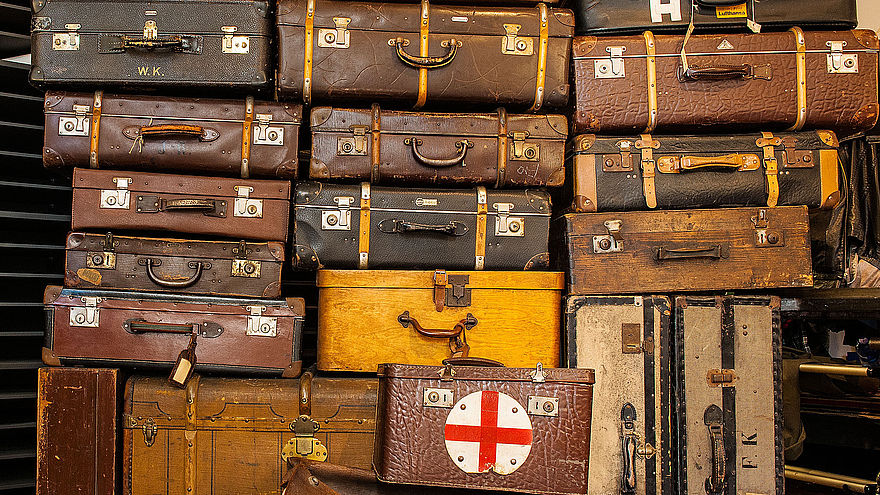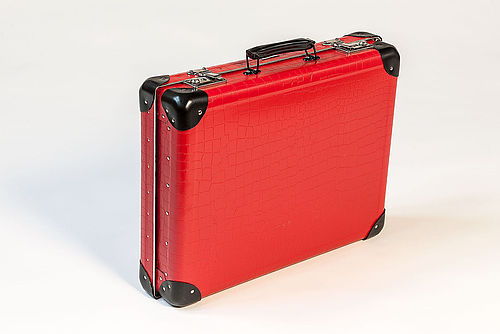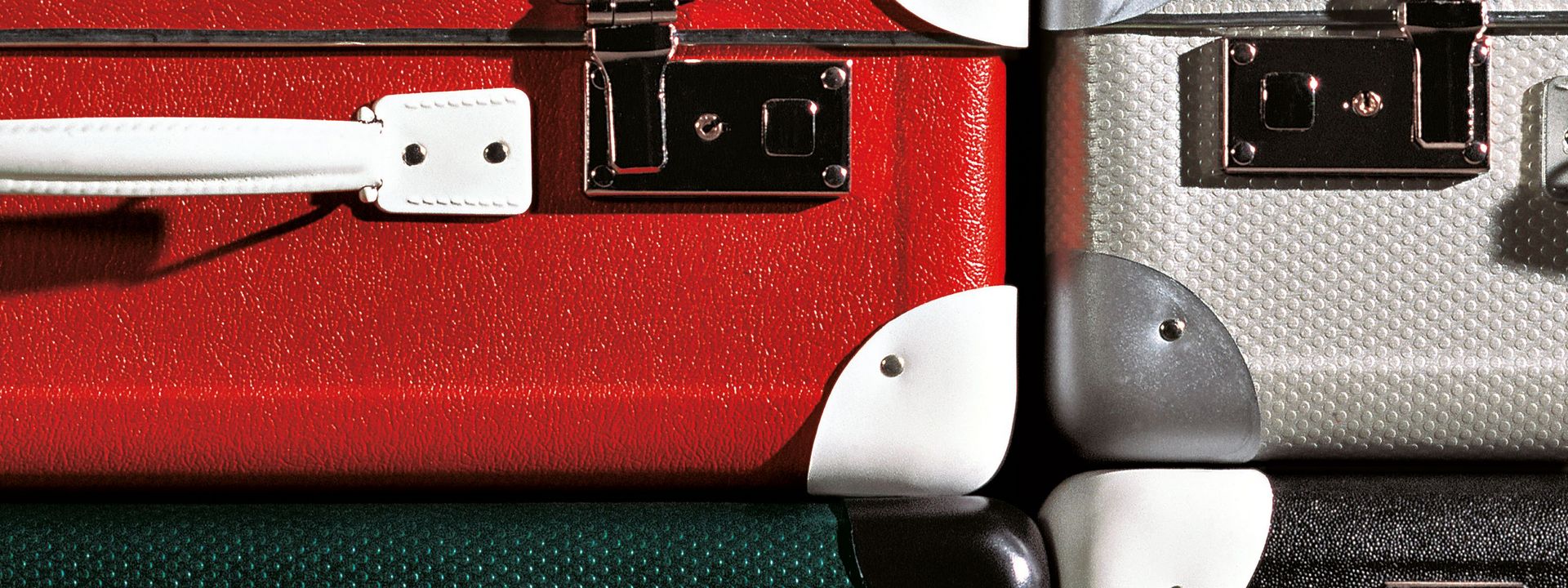We are remodeling! From April on, the case production area will be converted into a hands-on workshop. From 2025, the focus here will be on repairing and upcycling. Simply join in! We will keep you up to date.
Design and Production of an Everyday Item: A Timeline
Every traveler needs a suitcase. Travel used to be arduous, and suitcases were robust. Trunks with domed lids were mounted on stagecoaches, and XXL steamer trunks made journeys by ship. In the second half of the 19th century, railroads introduced two revolutionary changes. First, they made long-distance travel more affordable, thus slowly opening it up to the masses. Second, they changed the way suitcases were designed. Suitcases became smaller and flatter, to make them easier to stack on railroad cars. With the advent of air travel, reducing the weight of suitcases also became decisive, as every extra pound of luggage made it more difficult to take off and increased fuel costs.

SDTB / C. Kirchner
The Suitcase: From Handicraft to Mass Production
Down to the 19th century, suitcases were made by craftsmen in a series of workshops. Joiners made wooden boxes, pursemakers covered them with leather, and then locksmiths attached locks and metal fittings. In the mid-19th century, suitcase-making became a trade in its own right. Such craftsmen had to master riveting, nailing, screwing, sewing, and gluing. Nevertheless, their time was short, as they could not keep up with the increasing number of travelers or with the technological innovations that facilitated industrial manufacturing. Suitcases were now also being mass produced. Between 1870 and 1939, numerous suitcase factories opened in Germany, Europe, and the United States. A production line recreated in the Deutsches Technikmuseum shows how suitcases were typically manufactured. The machines and tools are from a small factory in southern Germany that produced standard hardboard suitcases in the 1920s and 1930s.
Making a Suitcase: A Step-by-Step Guide
Visitors to the exhibition can follow each step in the process of how our “museum suitcases” are produced, from the hardboard to the final product. These steps include:
- Punching: Using a punch press, large holes are punched out of the four corners of pieces of hardboard that have been precut to the proper dimensions for making the top and bottom of a suitcase.
- Bending: A gas bending machine heats up the flat, punched, precut boards to bend them into the desired suitcase shape.
- Crimping: The top of the suitcase needs a wooden frame reinforced with a steel band. The flat steel is crimped (i.e., bent) on one side, sawed through, and shaped to fit the suitcase’s dimensions.
- Nailing: Using a nailing machine, the bent hardboard is nailed to the wooden frame.
- Finishing: After the bottom of the suitcase has been riveted, locks, fasteners, handles, and hinges are also riveted and nailed on.
A punch press is used to punch holes at all four corners of pieces of hardboard that will become the top and bottom of a suitcase.
SDTB / C. Kirchner
The pieces of hardboard are heated up and bent into the desired shape by a gas bending machine.
SDTB / C. Kirchner
The top of the suitcase needs a wooden frame reinforced with a steel band. The flat steel is crimped (i.e., bent on one side), cut, and shaped to fit the suitcase’s dimensions.
SDTB / C. Kirchner
The steel band is pressed onto the suitcase top with a hand lever press. In this way, the top and bottom pieces of the suitcase can be fit together.
SDTB / C. Kirchner
Using a nailing machine, the shaped hardboard is nailed to the wooden frame. This gives the suitcase the necessary stability.
SDTB / C. Kirchner
Once it has been nailed to the wooden frame, the bottom of the suitcase is riveted. The corners are riveted first.
SDTB / C. Kirchner

SDTB / C. Kirchner
This tiny suitcase production unit at the Deutsches Technikmuseum preserves a bygone manufacturing technology. Indeed, hardly any suitcases are produced in Germany anymore. More than 90 percent of the suitcases sold in Germany are now manufactured abroad. In the 1970s, 40,000 men and women in Germany were still employed in suitcase manufacturing. In 2003, the number was fewer than 6,000.
The suitcases produced in the museum are available in the museum shop!

